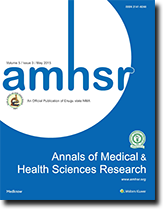

Background: Patient attrition has been a challenge in managing HIV programs in resourceâ�?�?limited settings. Aim: This study reviews the predictors of loss to followâ�?�?up (LTFU) in our hospital and suggests the best practices for dealing with the issue. Subjects and Methods: A 5â�?�?year retrospective cohort study of 1256 HIVâ�?�?infected patients. Baseline CD4 counts, age, gender, year of enrolment, and antiretroviral therapy combination regimen were considered in this study. Kaplan–Meier models were used to estimate the univariate timeâ�?�?toâ�?�?LTFU and Cox proportional hazards models to identify the multivariate predictors of LTFU. Results: Twentyâ�?�?four percent (23.9% [301/1256]) of patients were lost to followâ�?�?up. Baseline CD4 count, year of enrolment, and drug combination were significant predictors of LTFU. Patients enrolled earlier (2008/2009) were twice as likely to be LTFU compared with those enrolled later (2010–2013). Gender and age did not significantly predict LTFU nor confound other predictors. Conclusion: The program showed higher LTFU rates than most studies in Nigeria and Africa, maybe due to difficulties with the access to the hospital and possible treatment fatigue. This study recommends the provision of transportation subsidies and proactive patient followâ�?�?up with “peerâ�?�?tracking” to reduce LTFU among HIV infected patients, especially in resourceâ�?�?limited settings.
Select your language of interest to view the total content in your interested language
Annals of Medical and Health Sciences Research received 24805 citations as per google scholar report
 The Annals of Medical and Health Sciences Research is a monthly multidisciplinary medical journal.
The Annals of Medical and Health Sciences Research is a monthly multidisciplinary medical journal.